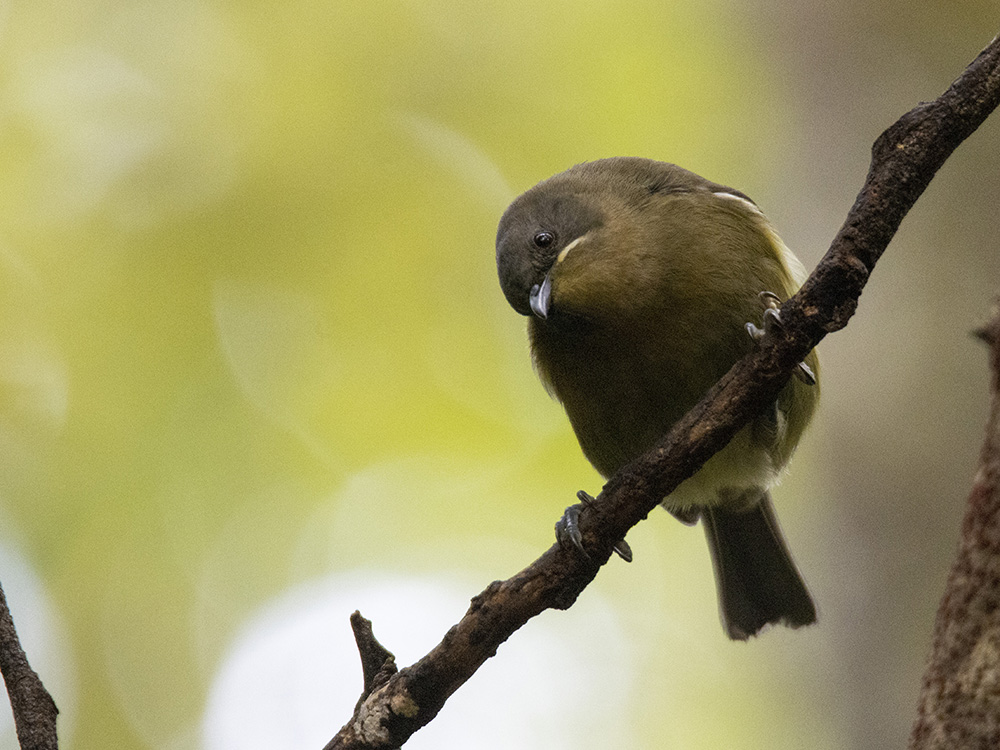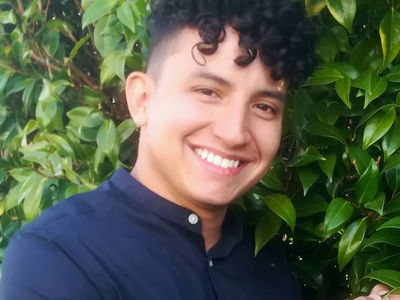Research presented to Cornell University
In August, Research Scientist Dr Carol Bedoya had the pleasure of presenting Verum Group’s bioacoustic research to the Cornell Lab of Ornithology, which manages the global eBird site.
Laura and Carol have expanded their research to other New Zealand species, including bellbird/korimako. Photo: Louise Thomas.

September 2022: In August, Research Scientist Dr Carol Bedoya had the pleasure of presenting Verum Group’s bioacoustic research to the Cornell Lab of Ornithology, which manages the global eBird site. Carol presented about deep clustering approaches for the individual identification and censusing of birds by their calls, a type of passive acoustic monitoring, that he and Behavioural Ecologist Dr Laura Molles have been developing.
Carol says the method had caught the attention of Cornell's Lab, leading to his invite to present at the Acoustic Methods seminar there.
“The scrutiny of experts that work in the same field is fundamental in scientific research. This seminar is important for us because it is probably the most technical audience we could ever have. It was comprised of researchers and postdocs that work on the computational aspects of bioacoustics and ecoacoustics. This audience really understood our method in detail and asked interesting questions. I received tons of great feedback! They genuinely liked our approach and are very looking forward to seeing our future progress.”

Dr Carol Bedoya.
Laura and Carol have collected and analysed thousands of hours of bird recordings in the last few years in the Paparoa Ranges, initially concentrating on the great spotted kiwi/roroa (Apteryx maxima), but now expanding their research to other New Zealand species, including grey warblers/riroriro (Gerygone igata), bellbird/korimako (Anthornis melanura), and kea (Nestor notabilis).
The recordings from already identified individuals have been used to build a database to feed a machine learning process. The method is then able to recognise calls from existing birds and identify new ones. Several recordings of the same bird captured by different recorders at different sites can shed light on a bird's use of its territory.
"We believe that individual recognition will allow non-invasive monitoring, but we need to understand just how robust and practical the vocal ID method is. Studying birds already fitted with transmitters gives us an idea how accurate individual call identification can be."
Being able to identify individuals based on their sounds is giving the researchers a better understanding of social interactions between individual kiwi. "Birds have a range of communication needs, but most of it is centred around either finding a mate or telling off a neighbour."
Read the Research
Jahn, P., Ross, J., MacKenzie, D. & Molles, L. (2022). Acoustic monitoring and occupancy analysis: cost-effective tools in reintroduction programmes for roroa-great spotted kiwi. New Zealand Journal of Ecology 46, 1, 3466. doi:10.20417/nzjecol.46.21
What it's about:
Monitoring the response of wildlife populations to conservation management, such as translocations, is crucially important for assessing its effectiveness. Passive acoustic monitoring (PAM) is an emerging tool for monitoring cryptic and elusive species and is increasingly used in the management of kiwi.
Bedoya, C. & Molles, L. (2021). Acoustic censusing and individual identification of birds in the wild. 14pgs. Preprint doi:10.1101/2021.10.29.466450
What it's about:
Individual bird calls carry information that can be utilized as an alternative to physical tagging of individuals. However, it is rarely used in conservation tasks despite rapidly-expanding use of passive acoustic monitoring techniques. Reliable acoustic individual recognizers and accurate quantifiers of population size remain elusive, which discourages the use of vocal individuality for monitoring, wildlife management, and ecological research. We propose a neuro-fuzzy framework that allows discrimination of individuals by their calls, the discovery of unexpected individuals in a set of recordings, and estimation of population size using solely sound.
Click here for Supplementary Information (Data) used in this paper.